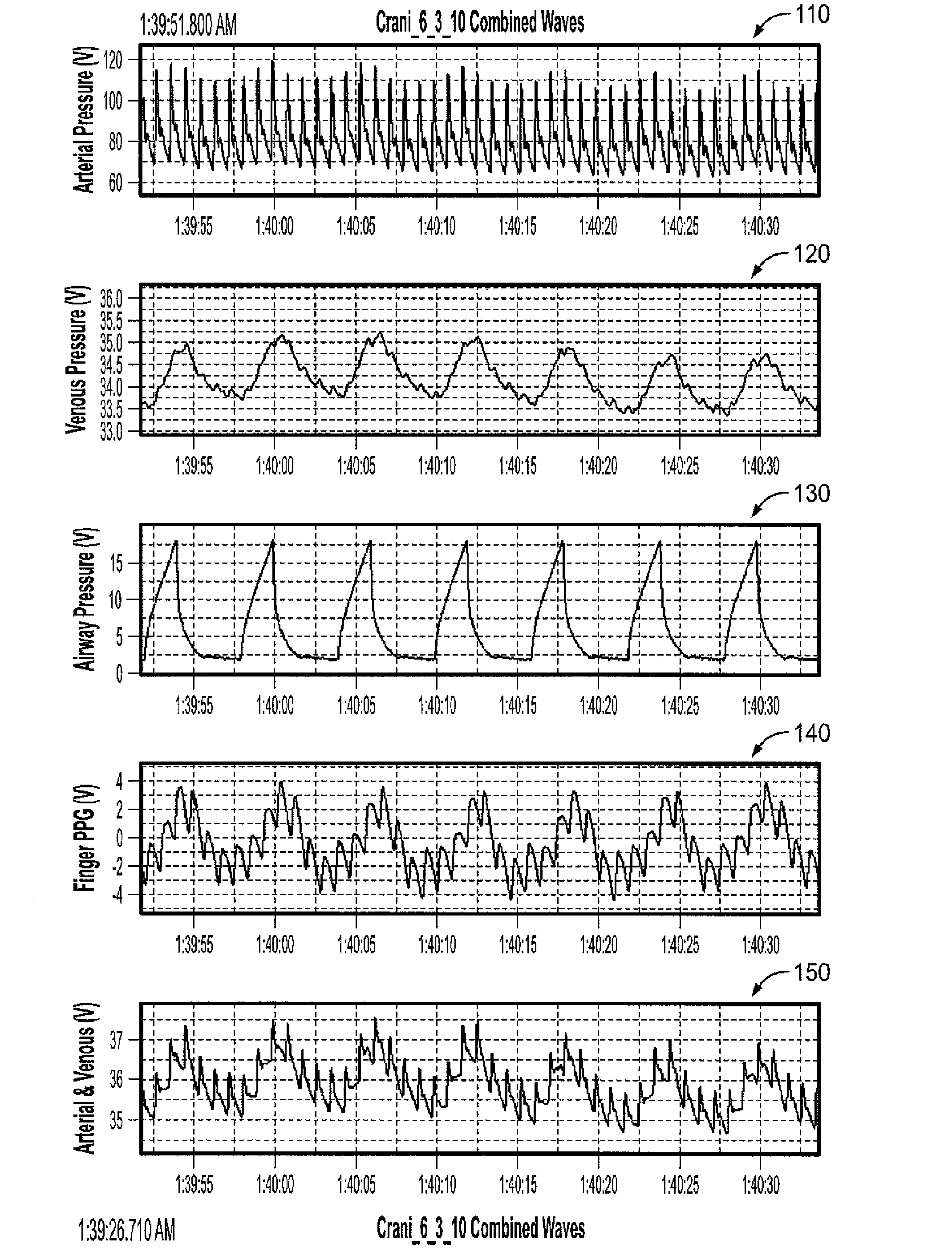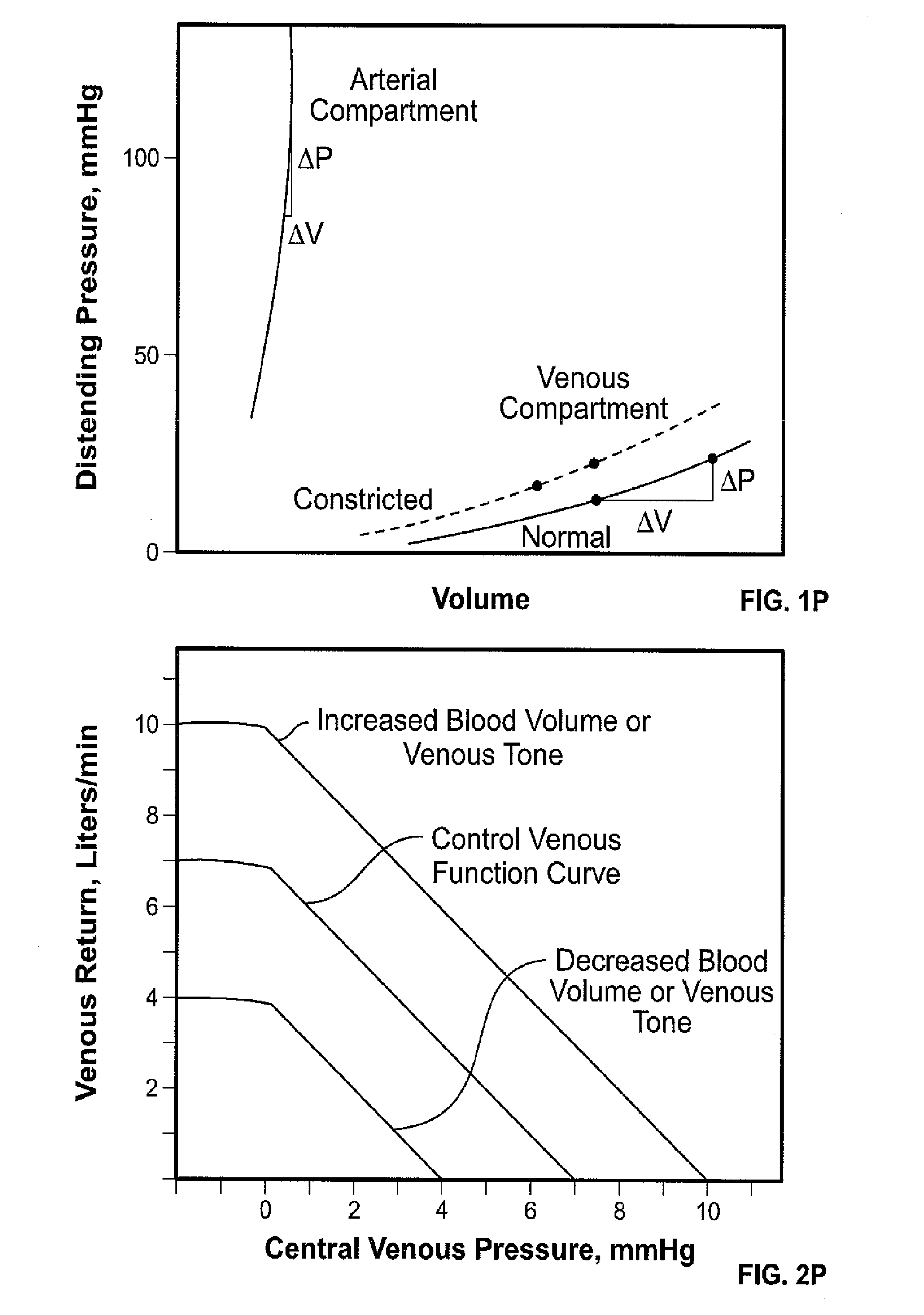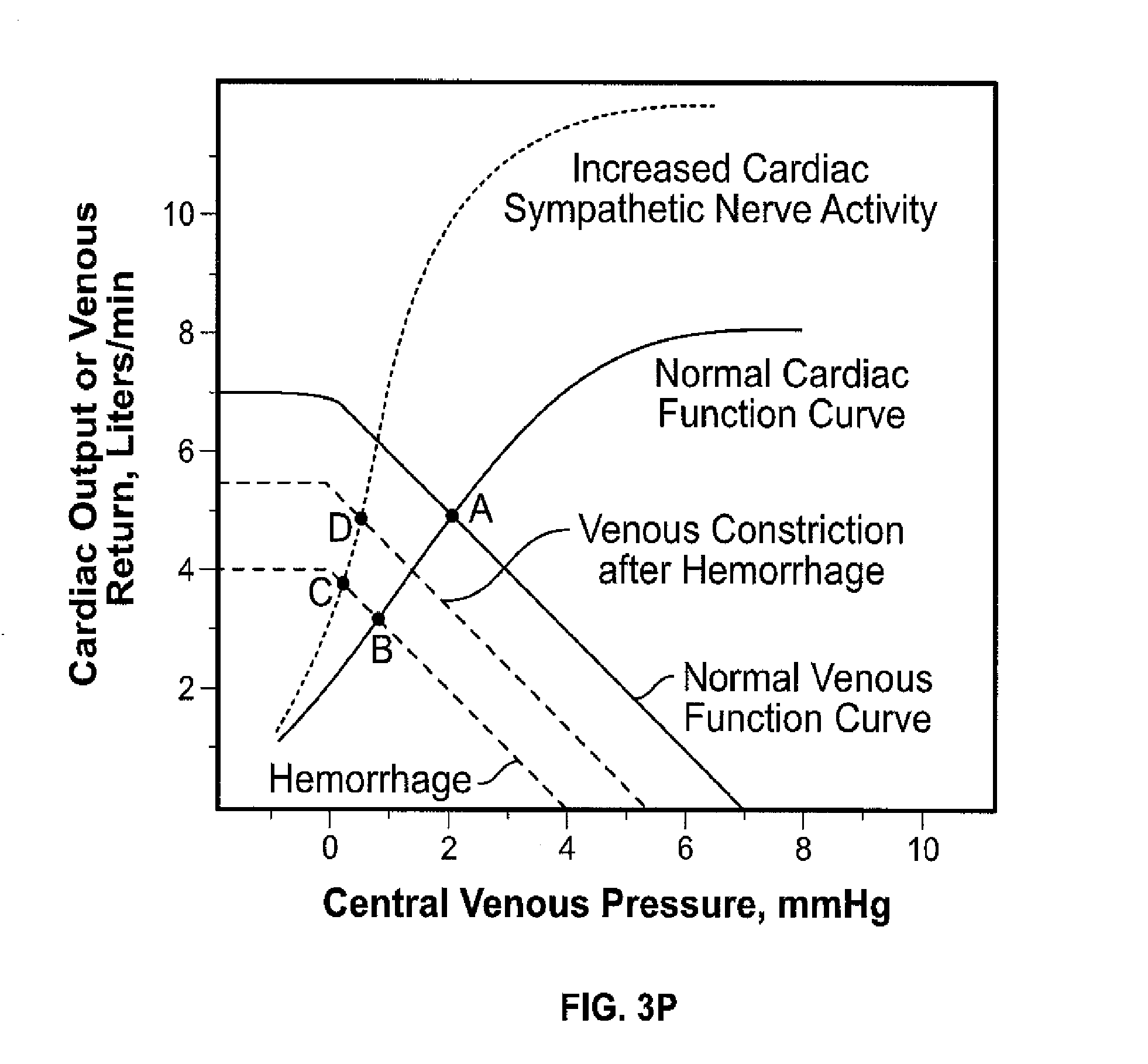Apparatus, Systems and Methods Analyzing Pressure and Volume Waveforms in the Vasculature
a vasculature and pressure waveform technology, applied in the field of apparatus, systems and methods for analyzing pressure and/or volume waveforms in the vasculature, can solve the problems of divergence of pvp/cvp, poor vascularity, and low vascularity of the peripheral venous componen
- Summary
- Abstract
- Description
- Claims
- Application Information
AI Technical Summary
Benefits of technology
Problems solved by technology
Method used
Image
Examples
Embodiment Construction
)
[0063]According to the present disclosure, new and improved apparatus, systems and methods are provided for analyzing pressure and / or volume waveforms in the vasculature. In exemplary embodiments, the apparatus, systems and methods provided herein relate to analyzing pressure and volume waveforms in the vasculature. In further exemplary embodiments the apparatus, systems and methods provided herein relate to analyzing respiratory-induced variation (RIV) of waveforms in the peripheral vasculature. Note that as used herein, RIV is intended to encompass both spontaneous respiration and mechanical ventilation.
[0064]Apparatus Systems and Methods Comparing Pressure Waveforms to the PG Signal:
[0065]In exemplary embodiments, the apparatus, systems and methods may generally involve (i) generating a pressure waveform for a particular region of the vasculature, e.g., an arterial or venous pressure waveform, (ii) correlating the pressure waveform to a PG signal, and (iii) comparing the pressur...
PUM
 Login to View More
Login to View More Abstract
Description
Claims
Application Information
 Login to View More
Login to View More - R&D
- Intellectual Property
- Life Sciences
- Materials
- Tech Scout
- Unparalleled Data Quality
- Higher Quality Content
- 60% Fewer Hallucinations
Browse by: Latest US Patents, China's latest patents, Technical Efficacy Thesaurus, Application Domain, Technology Topic, Popular Technical Reports.
© 2025 PatSnap. All rights reserved.Legal|Privacy policy|Modern Slavery Act Transparency Statement|Sitemap|About US| Contact US: help@patsnap.com



